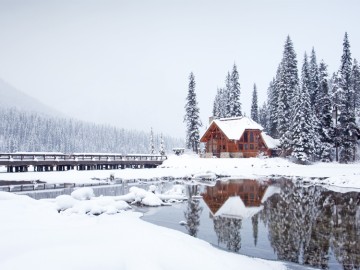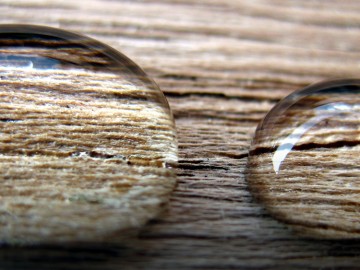
Personally Speaking
The new SILRES® WH wood preservative worked perfectly in the lab. What does it look like in practice? WACKER employees have tested SILRES® WH themselves ... On items that are important to them. Here are the results.
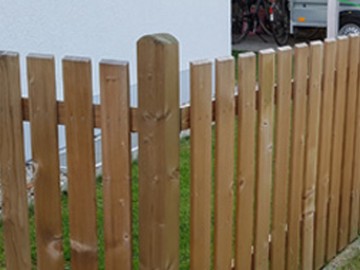
Test 1: to the limits of the possible
Dirk S. didn’t want to treat his fences (one and two years old) at all at first. But when he discovered SILRES® WH, he took the opportunity to provide additional wood preservation - to guard against dirty water splashed up from the street. And while he was at it, our tester also tried out the product on unrelated objects.
Combating Rain
The wood of the fences was already vacuum pressure impregnated. “But that didn’t have a visible influence on the moisture absorption. The wood was visibly wet after each rain shower,” says Mr. S. The SILRES® WH dilution (1:10) was readily absorbed. Our tester left one fence section untreated for comparison.
The result was impressive: following treatment with SILRES® WH, rain and dirty water splashes from the road simply roll off the fence, and even dirt can now be easily rinsed off with the garden hose.
“Two to three hours after the first coat of SILRES® WH was applied, it began to rain. I was concerned that the coating might be leached out, but three days later, the beading effect was very clearly visible.”
Dirk S.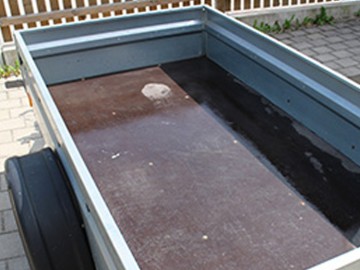
Phenolic plywood sheets are water resistant due to their phenolic resin facing, and therefore do not absorb SILRES® WH.
Do not use SILRES® WH on paint and phenolic plywood.
Phenolic plywood sheets are water resistant due to their phenolic resin facing, and therefore do not absorb SILRES® WH. Our colleague also painted a bench made of Euro-pallets with SILRES® WH. It had been treated with a clearcoat, which was already weathered. “I sanded the bench and painted it with SILRES® WH. Now, although the water rolls off, the bench is sticky. It’s better to remove previous coatings completely.”
Dirk S. additionally painted the phenolic plywood board in his car trailer with SILRES® WH. “There was really no effect at all to be seen here.” Nevertheless, our adventurous tester declared himself very satisfied with SILRES® WH. “WACKER recommends the product for uncoated fences, beams and facades. And I have to say that, after 18 months, the treated fence parts look much better than the untreated ones.”
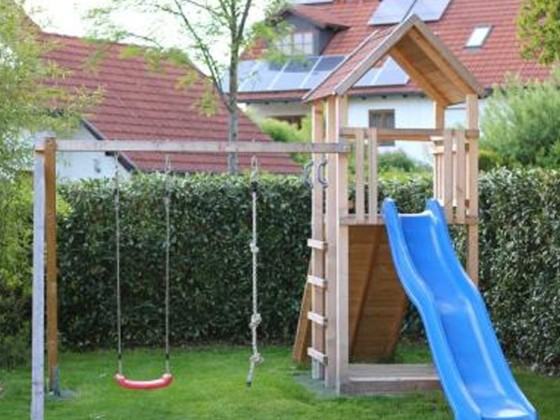
Test 2: Does SILRES® WH keep its promises?
Thomas M. has already tested some WACKER products: “I’m interested in whether our products keep their promises. I’m very fussy about that. But I enjoy testing new things.” Mr. M found out about SILRES® WH on the Intranet. As he wanted to build a children’s climbing tower, he tried out the innovative wood preservative. And he also considered the environment, “I didn’t want to use vacuum pressure impregnated wood, since potentially harmful metal salts are used, which can leach out and enter the soil.”
Tips
“Immediately after treatment, the wood was still a little tacky, noted Mr. M. “You have to be sure to protect the freshly coated wood against contamination with dust or leaves. But as soon as coating is completely cured, it is no longer sticky.” As a tip, he recommends covering up everything that doesn’t need to be treated. Since once the resin has cured completely, it’s almost impossible to remove.
Dip Coating
The WACKER employee built the climbing tower from untreated Nordic spruce. He used a five percent solution, brushing it onto the wood before assembly. “It was very complicated, since the aqueous solution is very thin. It would have been simpler to treat the wood by dipping. A non-splash painting roller would be another possibility,” he remembers. Nordic spruce is very dense and the material was planed very smooth, so the wood didn’t absorb the dilute solution so well for the prime coat. With the second coat, some days later, he achieved an even distribution and good saturation. He is very satisfied with the result: “After some weeks, the beading effect was very pronounced and is still perfect even after two years. So far, SILRES® WH really keeps its promise.“
“I’m just interested in whether our products really keep their promise. I’m very fussy about that. But I enjoy trying out new things.
Thomas M.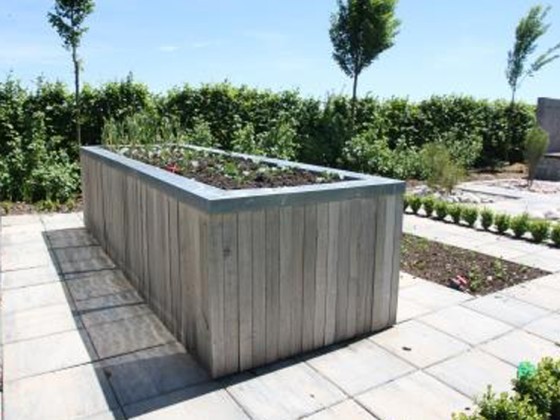
Test 3: Quality is Everything
“The most valuable thing about a coating is the labor time,” says Dr. Andreas K. “That was why I found SILRES® WH so interesting, since you don’t have to repaint every two years.” As a tinkerer and DIY enthusiast, he often tests WACKER products. For him, quality is everything: “whether it’s WACKER or not, if a product is no good, I won’t use it a second time.” Dr. K has had good experience with SILRES® BS and was impressed by the version for wood: “When I read that there’s now a SILRES® water-repellent treatment for wood, I had to try it out immediately.
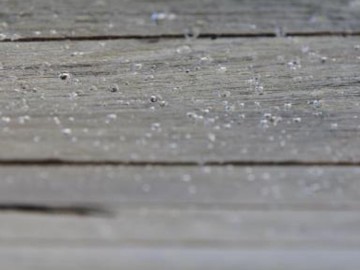
Thanks to the weathering-resistant molecular silicone-resin network, water simply rolls off the wood surface.
A Weathered Look without Damage
At first sight, the wood around the raised planting beds look untreated. However, there is no moisture damage since it has been treated with SILRES® WH. The WACKER employee also treated the playground apparatus in his garden. He says that acquaintances of his had to remove their swing after five years, since the wood was rotten. “There’s a huge advantage in applying SILRES® WH,” confirms Dr. K. “After two coats have been applied, moisture just rolls off; the wood surfaces dry rapidly and the material stays well preserved for many years.”
“The most valuable thing about a coating is the labor time.”
Andreas K.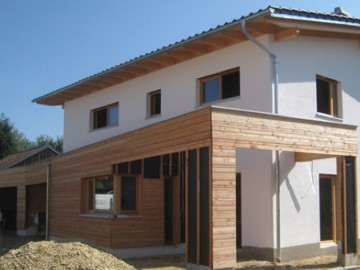
Test 4: SILRES® WH helps to preserve the wooden facade for longer.
Wood is becoming increasingly popular as a sustainable construction material. Andreas U. considered environmental protection an important factor when building his house. He therefore opted for an untreated larch facade for his front building with garage.
A Genuine Alternative
He learned about SILRES® WH in WACKER’s company newspaper. “I thought to myself it would be a genuine alternative to conventional impregnation agents, and I asked our applications engineers about it. A colleague of mine had also had positive experiences with using the product privately, and he gave me some good tips for using it. So I just tried it out.”
“The front of my facade is completely exposed to the weather. It took several days for the wood to dry out again after a rain shower. So I wanted to impregnate the facade with SILRES® WH. Since the silicone-resin network transmits UV, the natural graying took place despite the treatment, which was important to me.
Andreas U.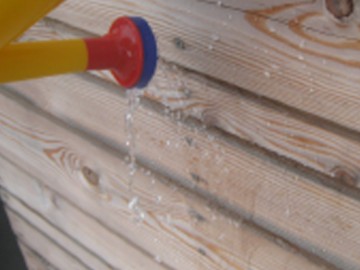
Even after 18 months, the beading due to SILRES® WH is very clearly pronounced.
A Clear Recommendation
After treatment with a 1:9 ratio mixture, very pronounced beading was apparent after two months. Mr. U applied the dilute solution with a garden spray: “It worked well. I sprayed over a large area and then distributed it evenly with the brush. In two hours, I had finished.” 18 months have passed since then and the swings and children’s playhouse have been treated as well. One liter of SILRES® WH is enough for the facade (80–100 m2) and playground apparatus. So far, he says that he is “completely satisfied with SILRES® WH. The facade is uniformly gray with no marks. I can sincerely recommend the product.”
Are you interested in our SILRES® WH products?
You can find all the technical details and safety information for our SILRES® WH-product range in the product portal.
To the product portal

